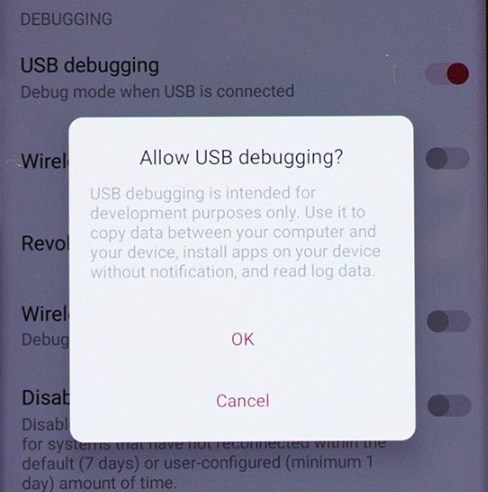What is USB Debugging on Android & How to Enable
Sofia Albert updated on Nov 12, 2024 to iOS & Mac Topics
You will receive a notification to allow USB debugging when you connect your Android phone to computer. If you want to know more about USB debugging, please keep reading.
When you connect your Android phone to a computer, you may see a prompt saying, "Allow USB debugging." What is USB debugging, and what can it do? Should you enable USB debugging mode on your Android phone? Please find answers in the following guide.
USB debugging is a developer mode in Android phones. USB Debugging allows deep communication between a computer and an Android device over a USB connection. When you connect your phone to computer, you will see this debugging information. It is mainly used for developing and testing apps. After enabling USB debugging, developers can use various tools (such as ADB and the Android Debug Bridge) to debug apps, install apps, access device logs, execute commands, etc. If you want to explore advanced features on Android devices, USB Debugging is tailor-made for you.

Now, you know that with the USB Debugging mode, you open up a fabulous Android world. Let's see what you can do with USB Debugging in detail.
USB Debugging is essential for some technical uses. Here are the steps to enable USB Debugging on Android phones.
Step 1. On your Android phone, open the Settings app and scroll down to tap "About <device>
Step 2. Find "Build number" and tap it seven times until you see you are a developer.
Step 3. Go back to the Settings menu and tap "Developer options."
Step 4. Scroll down to find USB debugging and enable it.
The first thing to consider when using USB debugging is security. Enabling USB debugging increases the security risk of the device, so it is recommended to turn off USB debugging when not in use. Any computer connected to the device can access it through ADB. After enabling USB debugging, the data on the device is more easily accessible. Make sure the device is connected to a trusted computer. In some cases, you may need to install specific USB drivers on your computer to recognize and connect to the device. If you want to transfer files from Android to PC using USB, the best way is to use some reliable transfer tools, like EaseUS MobiMover.
EaseUS MobiMover can help you transfer various file types from Android to PC/Mac in one click. It will keep your data safe, so you don't need to worry about data security. It can also help you back up your Android phone to a computer in one click.
USB debugging is used to move data between Android and computer, install apps, and read log data. Enable USB debugging in "Developer options." When USB Debugging is enabled, be cautious because connecting your device to untrusted computers may put it at risk for security issues. You can disable USB debugging when you don't need it.
Share this post with your friends if you find it helpful!
Related Articles
iPhone Not Saving Photos to Camera Roll in iOS 11? Fixed Here!
Does Airplane Mode Turn Off Location [Answers & Tips]
iOS 17 Software Update Stuck?Quick and Easy Fixes Here
How to Get App Store Back on iPhone [100% Working]